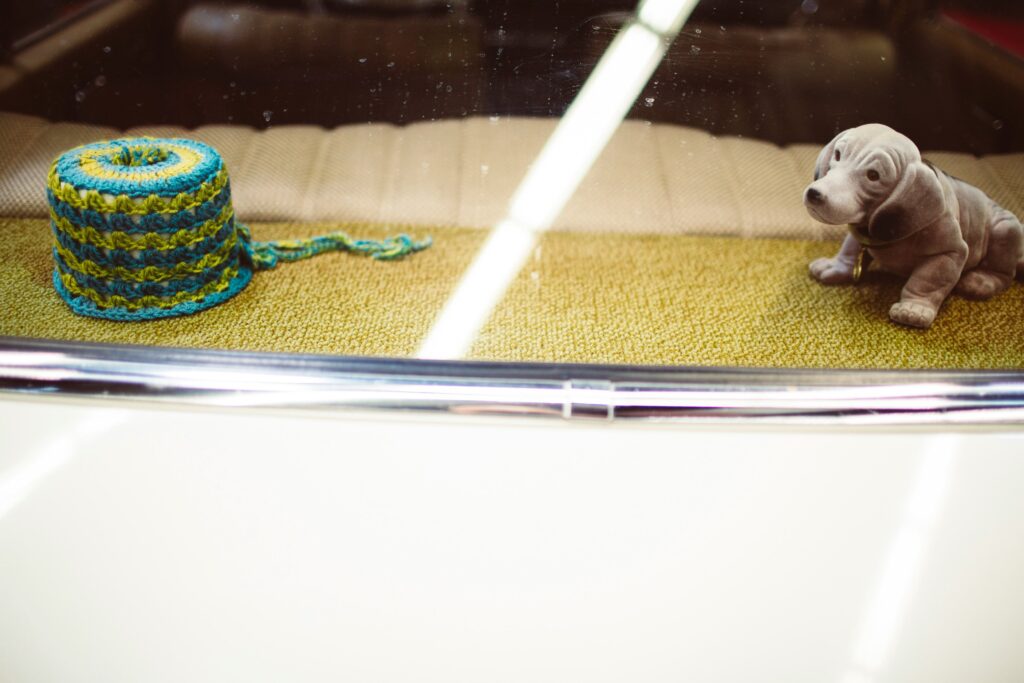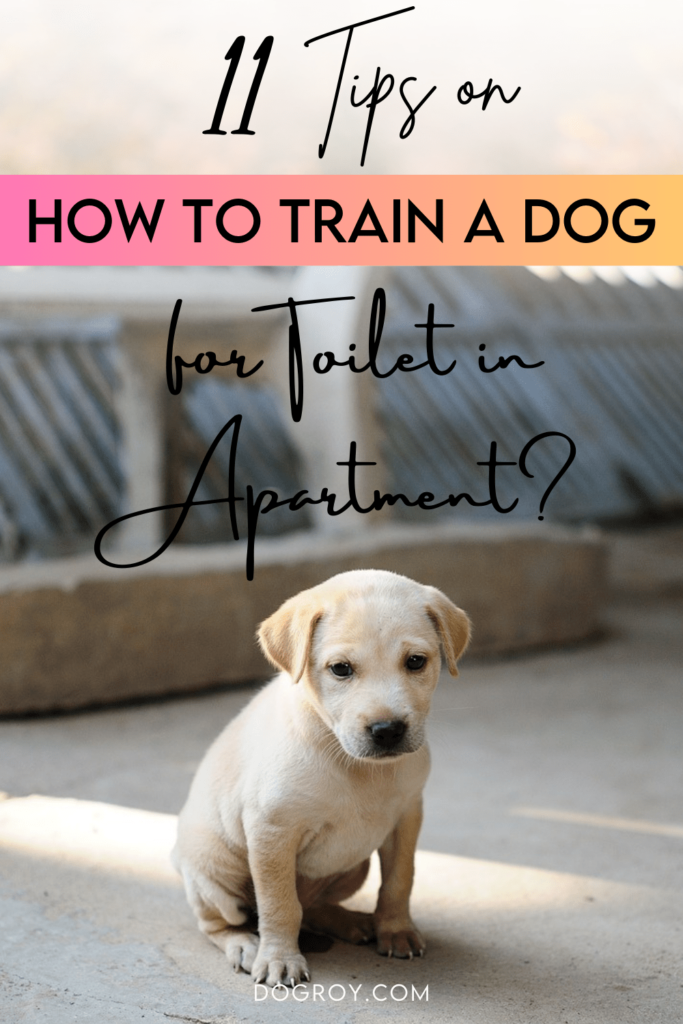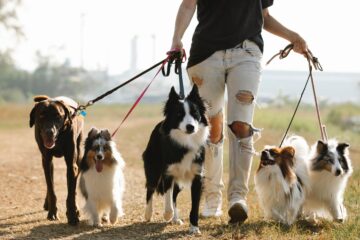Bringing a lovable furry friend into your apartment is a delightful experience, filled with joy, companionship, and, of course, a few unique challenges.
One of the pivotal aspects of cohabiting with your canine companion in an apartment setting is mastering the art of toilet training.
Ensuring that your dog understands where and when to relieve themselves indoors is not just about maintaining a clean living space but also fostering a harmonious relationship between pet and owner.
The process of training a dog for toilet habits in an apartment necessitates a thoughtful blend of understanding your pup’s needs, creating a conducive environment, and implementing effective training techniques.
In this extensive guide, we’ve curated 13 friendly and practical tips to help you navigate this journey with confidence and success. Discover effective strategies and tips on How to Train a Dog for Toilet in Apartment setting.
From establishing a consistent routine to incorporating positive reinforcement, each tip is designed to make the training process enjoyable for both you and your furry friend.
As you embark on this adventure, keep in mind that every dog is unique, and the learning curve may vary.
Patience, positivity, and a gentle approach are your greatest allies in creating a happy and healthy indoor environment.
Let’s dive into the world of apartment living with your four-legged friend, armed with the knowledge and tips that will transform the challenge of toilet training into a bonding experience that strengthens the companionship you share.
Table of Contents
Mastering Apartment Living: How to Train a Dog for Toilet in Apartment

1] Establish a Designated Toilet Area
Designating a specific area within your apartment for your dog’s toileting needs is a foundational step in successful indoor training.
Choose a spot that is easily accessible and consistent.
Dogs thrive on routine, and having a designated area helps them associate that spot with bathroom activities.
Consider using a specific mat, litter box, or even a patch of indoor grass to clearly define the space.
2] Create a Routine
Establishing a regular bathroom routine for your dog is crucial for effective indoor training.
Consistency in taking your dog to the designated area at specific times, such as after meals and before bedtime, helps regulate their toileting schedule.
Tip: “Set specific times, such as after meals and before bedtime, to create a predictable routine.”
Dogs often feel more secure when they know what to expect, and a routine provides a sense of predictability in their daily activities.
3] Use Positive Reinforcement
Positive reinforcement is a powerful tool in dog training, including indoor toileting.
When your dog uses the designated toilet area correctly, reward them with praise and treats.
Positive reinforcement reinforces the association between the behavior and the reward, making it more likely that your dog will repeat the desired action.
Celebrate each successful use of the designated area to create a positive toileting experience.
4] Be Patient During Accidents
Accidents are inevitable during the learning process, especially in the early stages of indoor training.
It’s crucial to remain patient and avoid punishment. Instead of scolding your dog for accidents, calmly redirect them to the designated toilet area.
Patience and positive redirection help your dog understand the desired behavior without associating toileting with negative experiences.
5] Choose Appropriate Flooring
Selecting easy-to-clean flooring in the designated toilet area is essential for maintaining a hygienic living space.
Materials like tile or laminate are preferable, as they simplify cleanup and minimize the risk of lingering odors.
Avoid carpets or rugs in these areas, as they can absorb odors and make cleaning more challenging.
In the choice of flooring, create a canvas that makes cleanup a breeze, ensuring a clean and inviting environment
6] Invest in Puppy Pads
Puppy pads can be valuable tools, especially for smaller breeds or situations where outdoor toileting is not immediately accessible.
Gradually transition your dog from using puppy pads to outdoor toileting as they become accustomed to the routine.
Place the pads in the designated area and gradually move them closer to the door, eventually transitioning to outdoor walks.
7] Regular Outdoor Walks
Incorporating regular outdoor walks into your routine is crucial for providing an alternative toileting option and allowing your dog to fulfill their bathroom needs in a different environment.
Outdoor walks also provide exercise and mental stimulation, contributing to your dog’s overall well-being.
• Regular outdoor walks are crucial for an alternative toileting option • Allow your dog to fulfill bathroom needs in a different environment • Provide exercise and mental stimulation for overall well-being • Incorporating walks into your routine is beneficial for your dog's health.
8] Use Command Words
Associating specific command words, such as “Go potty,” with the act of toileting helps communicate your expectations to your dog.
Consistent use of command words during bathroom activities creates a verbal cue that your dog can learn to associate with the behavior you desire.
Be patient and use positive reinforcement when they respond correctly to the command.
9] Clean Accidents Promptly
Thoroughly cleaning any accidents with pet-friendly cleaning products is essential to eliminate residual scents that might attract your dog to repeat the behavior.
Dogs have a strong sense of smell, and proper cleaning helps prevent marking or revisiting the same spot for toileting.
10] Limit Water Access Before Bed
Controlling your dog’s water intake before bedtime is a proactive measure to minimize the likelihood of nighttime accidents.
While hydration is crucial, managing water access in the evening helps regulate bathroom needs during the night, contributing to a smoother indoor training experience.
Tip: “A well-hydrated day balanced with controlled evening water intake supports a peaceful night.”
11] Monitor Behavior Cues
Learning to recognize your dog’s behavior cues indicating their need to use the bathroom is a key aspect of successful indoor training.
Common cues include sniffing, circling, or sudden restlessness.
Promptly responding to these cues and guiding your dog to the designated toilet area helps reinforce the association between the behavior and the proper location.
12] Consider Indoor Grass Patches
For high-rise apartments or situations where outdoor access is limited, consider using indoor grass patches as an alternative toileting option.
These patches simulate the outdoor grass experience and can be placed in designated areas within your apartment.
Introduce your dog to the patch gradually, using positive reinforcement to create a comfortable and familiar toileting space.
13] Consult a Professional Trainer
If you encounter challenges or if indoor training is proving difficult, seeking guidance from a professional dog trainer is a wise decision.
A certified trainer can offer personalized solutions tailored to your specific apartment living situation.
Their expertise can address any unique challenges you may face and provide effective strategies for successful indoor toileting.
Tip: “Expert advice can address specific apartment living situations and enhance your training efforts.”
How to Train a Dog for Toilet in Apartment: FAQs
Can any dog be trained for apartment toileting?
Yes, most dogs can be trained for apartment toileting with the right strategies and consistent training efforts.
How long does it take to train a dog for apartment toileting?
Training timelines vary, but with consistent efforts, you can see positive results within a few weeks. Patience and consistency are key.
Should I punish my dog for accidents?
Avoid punishment for accidents. Instead, focus on positive reinforcement and redirecting your dog to the designated toilet area.
Can older dogs be trained for apartment toileting?
Yes, older dogs can be trained for apartment toileting using similar strategies. Patience and consistency are crucial regardless of age.

Conclusion:
Training a dog for toilet success in an apartment setting requires dedication and a well-thought-out approach.
By incorporating these 13 expert tips on “How to Train a Dog for Toilet in Apartment,” you’ll create a clean and comfortable living space for both you and your four-legged friend.
Remember, patience and positive reinforcement are key elements in this process.
As you implement these strategies, you’re not just teaching your dog where to go; you’re fostering a strong bond and creating a comfortable, clean living environment for everyone involved.
Embrace the journey, celebrate the successes, and enjoy the companionship of your well-trained and apartment-savvy canine friend.
Also Read : How to Train Your Dog Not to Jump on Visitors





